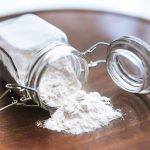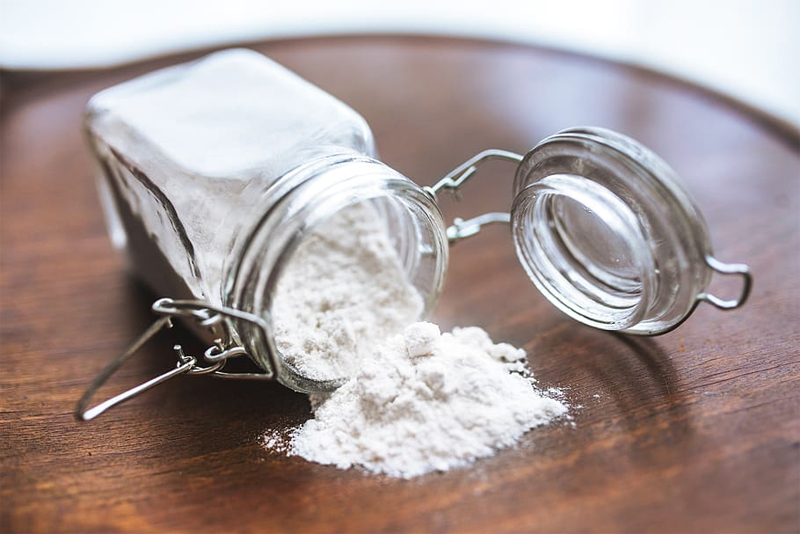 An artificial leavening agent composed of bicarbonate of soda combined with cream of tartar or calcium acid phosphate, or alternatively, sodium aluminum phosphate. The initial type, tartrate, reacts quickly and almost completely when the dry ingredients are combined with liquid at room temperature. This reaction releases a gas that expands during the process of baking. The second type, phosphate, or double-acting, reacts partially at room temperature and partially during the baking process.
An artificial leavening agent composed of bicarbonate of soda combined with cream of tartar or calcium acid phosphate, or alternatively, sodium aluminum phosphate. The initial type, tartrate, reacts quickly and almost completely when the dry ingredients are combined with liquid at room temperature. This reaction releases a gas that expands during the process of baking. The second type, phosphate, or double-acting, reacts partially at room temperature and partially during the baking process.
There exist two classifications of baking powder – single action and double action. Single-action baking powders start liberating carbon dioxide right after they come into contact with moisture, which is typically during the initial stages of mixing. Examples of single-action baking powders include tartrate and phosphate varieties. Conversely, double-action baking powders contain soda along with sodium aluminum sulfate and calcium acid phosphate. Although an immediate reaction takes place when the powder becomes damp, the most considerable reaction transpires within the oven as the dough is exposed to heat.
